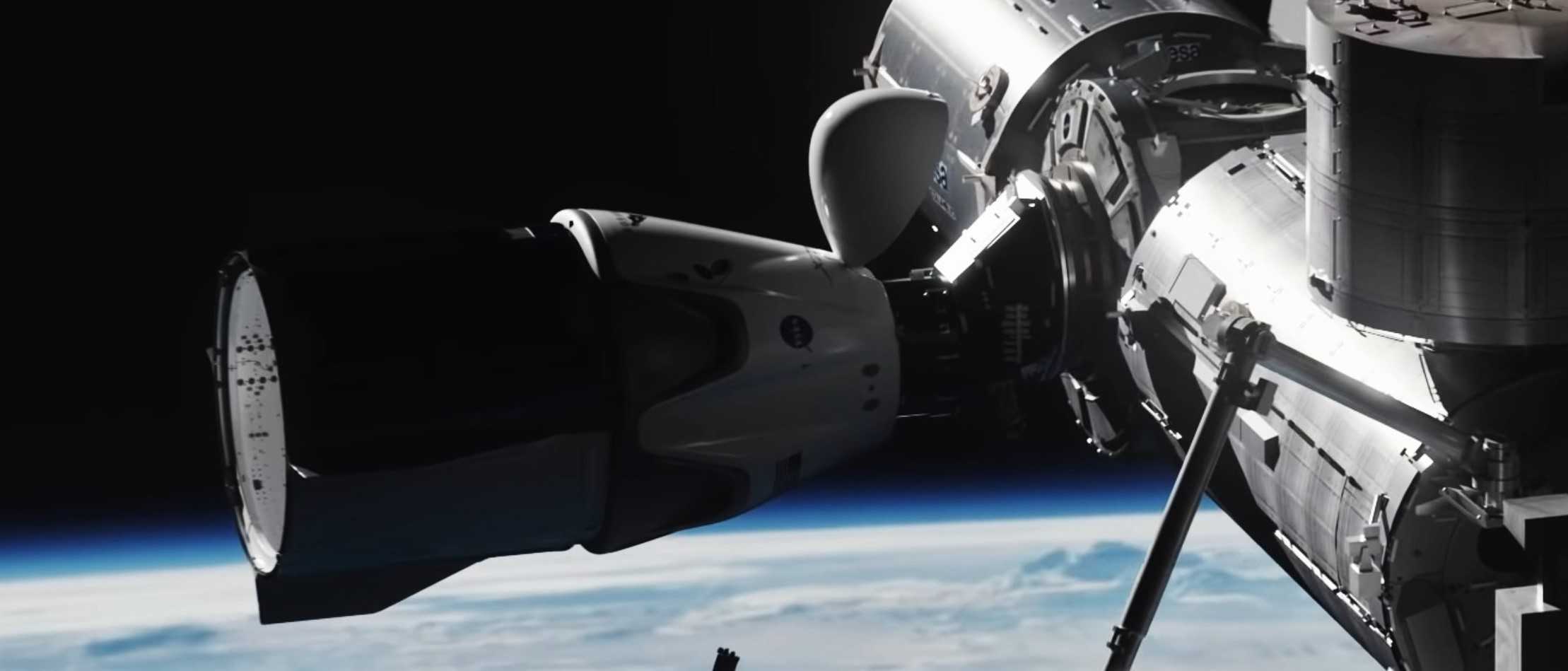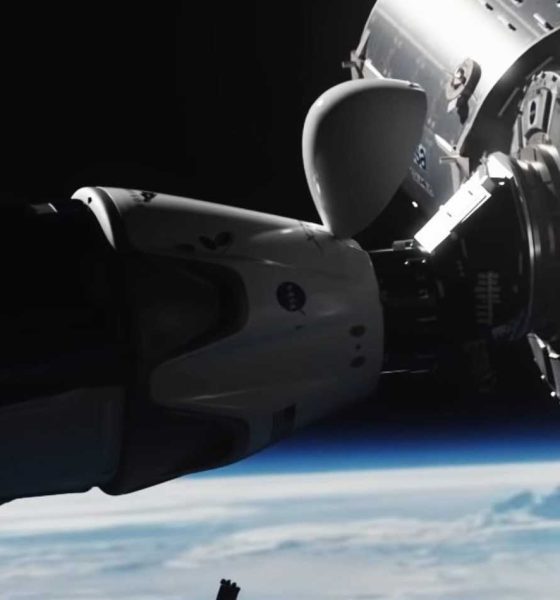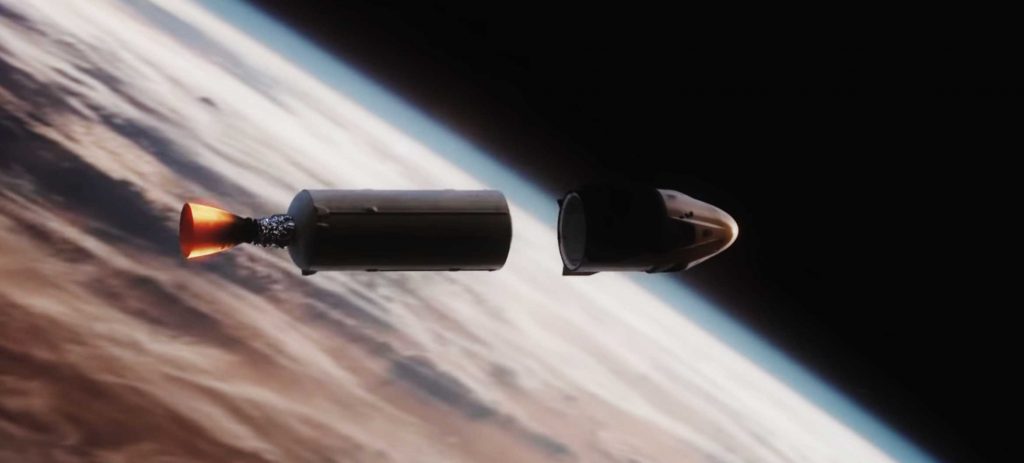

News
SpaceX's Crew Dragon astronaut launch debut schedule revealed by Elon Musk
On the heels of a brand new animation simulating the spacecraft’s next orbital launch milestone, SpaceX CEO Elon Musk has revealed a tentative schedule for Crew Dragon’s astronaut launch debut.
Known as Demo-2, short for Crew Dragon’s second orbital demonstration mission, the launch could make SpaceX the first commercial company in history to send astronauts to space (i.e. orbit), as well as the first private company to deliver astronauts to the International Space Station (ISS). If things go as planned over the next several months, that should kick off a new era where NASA will routinely rely on SpaceX (and Boeing) to ensure that the US has a continued presence in space.
The International Space Station has been continuously crewed by astronauts since October 31st, 2000, representing nearly two decades that humanity has had an uninterrupted presence in space. Supported by regular NASA Space Shuttle and Russian Soyuz launches that enabled space agencies to safely send astronauts to and from the space station, SpaceX’s Crew Dragon and Boeing’s Starliner are nearly ready to pick up the torch that NASA and the United States fumbled when the Shuttle was prematurely canceled in 2011.
Over the last five years, SpaceX has been working tirelessly to design, build, and test Crew Dragon – all in the name of ensuring that it will be one of the most reliable and capable human-rated spacecraft ever flown once it begins taking astronauts to and from the ISS. As with almost all human-rated spacecraft in history, Crew Dragon’s development has not been without its hurdles and detours, ranging from challenges with the spacecraft’s parachute recovery systems to a catastrophic capsule explosion during thruster testing.
As a result, SpaceX has put extra effort into optimizing and redesigning Crew Dragon’s many subsystems to ensure that all work exactly as intended. Thankfully, all of Crew Dragon’s development hurdles have occurred during testing specifically designed to reveal such problems, meaning that no humans have been harmed (or killed) over the course of the program. In the history of human spaceflight, it has often been the case that catastrophic spacecraft failure modes are only discovered after operational flights began, resulting in the deaths of numerous astronauts during Soyuz, Space Shuttle, and SpaceShipTwo – as well as three NASA astronauts during Apollo 1 ground testing.

Spaceflight is nevertheless a dangerous endeavor, at least for the time being, so it’s entirely possible that Crew Dragon will ultimately suffer accidents or failures during crewed missions, evidenced most recently by Starliner’s failure to reach the space station during the Boeing’s spacecraft’s first orbital launch. Still, both companies are working hard to ensure that even in the event of a failure, their spacecraft are able to protect their astronaut passengers and safely return them to Earth.
In line with that, SpaceX (unlike Boeing) opted to perform a live In-Flight Abort (IFA) test with Crew Dragon before allowing the spacecraft to begin astronaut launches. Scheduled to launch as early as January 11th, SpaceX will launch a Dragon spacecraft atop Falcon 9 and simulate a rocket failure during the most stressful point of launch. If Crew Dragon can fire up its abort thrusters and whisk its hypothetical passengers to safety, chances are that the spacecraft will be able to do the same at any other point during launch – from before liftoff all the way to orbit.
SpaceX has been developing its first human-rated spacecraft since it began build Cargo Dragon more than a decade ago – all paths for the company have ultimately pointed towards human spaceflight. According to CEO Elon Musk, the Crew Dragon spacecraft and Falcon 9 launch vehicle assigned to support the company’s inaugural astronaut launch will be in Florida and ready for flight as early as February 2020, a few-month delay compared to the often overly-optimistic executive’s previous Nov/Dec 2019 target.
Although the hardware could be ready to launch three months (or less) from now, Musk believes that the NASA preflight reviews that must follow will likely take “a few more months” – unfortunately likely given that Crew Dragon’s uncrewed launch debut (Demo-1) was likely ready for flight almost two months before NASA finally cleared SpaceX to launch.
Ultimately, as long as Crew Dragon’s IFA test goes well next month, it’s likely that the spacecraft will launch twice in the first half of 2020, potentially making history sometime in the second quarter.
Check out Teslarati’s Marketplace! We offer Tesla accessories, including for the Tesla Cybertruck and Tesla Model 3.

Elon Musk
Elon Musk and Tesla AI Director share insights after empty driver seat Robotaxi rides
The executives’ unoccupied tests hint at the rapid progress of Tesla’s unsupervised Robotaxi efforts.

Tesla CEO Elon Musk and AI Director Ashok Elluswamy celebrated Christmas Eve by sharing personal experiences with Robotaxi vehicles that had no safety monitor or occupant in the driver’s seat. Musk described the system’s “perfect driving” around Austin, while Elluswamy posted video from the back seat, calling it “an amazing experience.”
The executives’ unoccupied tests hint at the rapid progress of Tesla’s unsupervised Robotaxi efforts.
Elon and Ashok’s firsthand Robotaxi insights
Prior to Musk and the Tesla AI Director’s posts, sightings of unmanned Teslas navigating public roads were widely shared on social media. One such vehicle was spotted in Austin, Texas, which Elon Musk acknowleged by stating that “Testing is underway with no occupants in the car.”
Based on his Christmas Eve post, Musk seemed to have tested an unmanned Tesla himself. “A Tesla with no safety monitor in the car and me sitting in the passenger seat took me all around Austin on Sunday with perfect driving,” Musk wrote in his post.
Elluswamy responded with a 2-minute video showing himself in the rear of an unmanned Tesla. The video featured the vehicle’s empty front seats, as well as its smooth handling through real-world traffic. He captioned his video with the words, “It’s an amazing experience!”
Towards Unsupervised operations
During an xAI Hackathon earlier this month, Elon Musk mentioned that Tesla owed be removing Safety Monitors from its Robotaxis in Austin in just three weeks. “Unsupervised is pretty much solved at this point. So there will be Tesla Robotaxis operating in Austin with no one in them. Not even anyone in the passenger seat in about three weeks,” he said. Musk echoed similar estimates at the 2025 Annual Shareholder Meeting and the Q3 2025 earnings call.
Considering the insights that were posted Musk and Elluswamy, it does appear that Tesla is working hard towards operating its Robotaxis with no safety monitors. This is quite impressive considering that the service was launched just earlier this year.
Elon Musk
Starlink passes 9 million active customers just weeks after hitting 8 million
The milestone highlights the accelerating growth of Starlink, which has now been adding over 20,000 new users per day.

SpaceX’s Starlink satellite internet service has continued its rapid global expansion, surpassing 9 million active customers just weeks after crossing the 8 million mark.
The milestone highlights the accelerating growth of Starlink, which has now been adding over 20,000 new users per day.
9 million customers
In a post on X, SpaceX stated that Starlink now serves over 9 million active users across 155 countries, territories, and markets. The company reached 8 million customers in early November, meaning it added roughly 1 million subscribers in under seven weeks, or about 21,275 new users on average per day.
“Starlink is connecting more than 9M active customers with high-speed internet across 155 countries, territories, and many other markets,” Starlink wrote in a post on its official X account. SpaceX President Gwynne Shotwell also celebrated the milestone on X. “A huge thank you to all of our customers and congrats to the Starlink team for such an incredible product,” she wrote.
That growth rate reflects both rising demand for broadband in underserved regions and Starlink’s expanding satellite constellation, which now includes more than 9,000 low-Earth-orbit satellites designed to deliver high-speed, low-latency internet worldwide.
Starlink’s momentum
Starlink’s momentum has been building up. SpaceX reported 4.6 million Starlink customers in December 2024, followed by 7 million by August 2025, and 8 million customers in November. Independent data also suggests Starlink usage is rising sharply, with Cloudflare reporting that global web traffic from Starlink users more than doubled in 2025, as noted in an Insider report.
Starlink’s momentum is increasingly tied to SpaceX’s broader financial outlook. Elon Musk has said the satellite network is “by far” the company’s largest revenue driver, and reports suggest SpaceX may be positioning itself for an initial public offering as soon as next year, with valuations estimated as high as $1.5 trillion. Musk has also suggested in the past that Starlink could have its own IPO in the future.
News
NVIDIA Director of Robotics: Tesla FSD v14 is the first AI to pass the “Physical Turing Test”
After testing FSD v14, Fan stated that his experience with FSD felt magical at first, but it soon started to feel like a routine.

NVIDIA Director of Robotics Jim Fan has praised Tesla’s Full Self-Driving (Supervised) v14 as the first AI to pass what he described as a “Physical Turing Test.”
After testing FSD v14, Fan stated that his experience with FSD felt magical at first, but it soon started to feel like a routine. And just like smartphones today, removing it now would “actively hurt.”
Jim Fan’s hands-on FSD v14 impressions
Fan, a leading researcher in embodied AI who is currently solving Physical AI at NVIDIA and spearheading the company’s Project GR00T initiative, noted that he actually was late to the Tesla game. He was, however, one of the first to try out FSD v14.
“I was very late to own a Tesla but among the earliest to try out FSD v14. It’s perhaps the first time I experience an AI that passes the Physical Turing Test: after a long day at work, you press a button, lay back, and couldn’t tell if a neural net or a human drove you home,” Fan wrote in a post on X.
Fan added: “Despite knowing exactly how robot learning works, I still find it magical watching the steering wheel turn by itself. First it feels surreal, next it becomes routine. Then, like the smartphone, taking it away actively hurts. This is how humanity gets rewired and glued to god-like technologies.”
The Physical Turing Test
The original Turing Test was conceived by Alan Turing in 1950, and it was aimed at determining if a machine could exhibit behavior that is equivalent to or indistinguishable from a human. By focusing on text-based conversations, the original Turing Test set a high bar for natural language processing and machine learning.
This test has been passed by today’s large language models. However, the capability to converse in a humanlike manner is a completely different challenge from performing real-world problem-solving or physical interactions. Thus, Fan introduced the Physical Turing Test, which challenges AI systems to demonstrate intelligence through physical actions.
Based on Fan’s comments, Tesla has demonstrated these intelligent physical actions with FSD v14. Elon Musk agreed with the NVIDIA executive, stating in a post on X that with FSD v14, “you can sense the sentience maturing.” Musk also praised Tesla AI, calling it the best “real-world AI” today.








